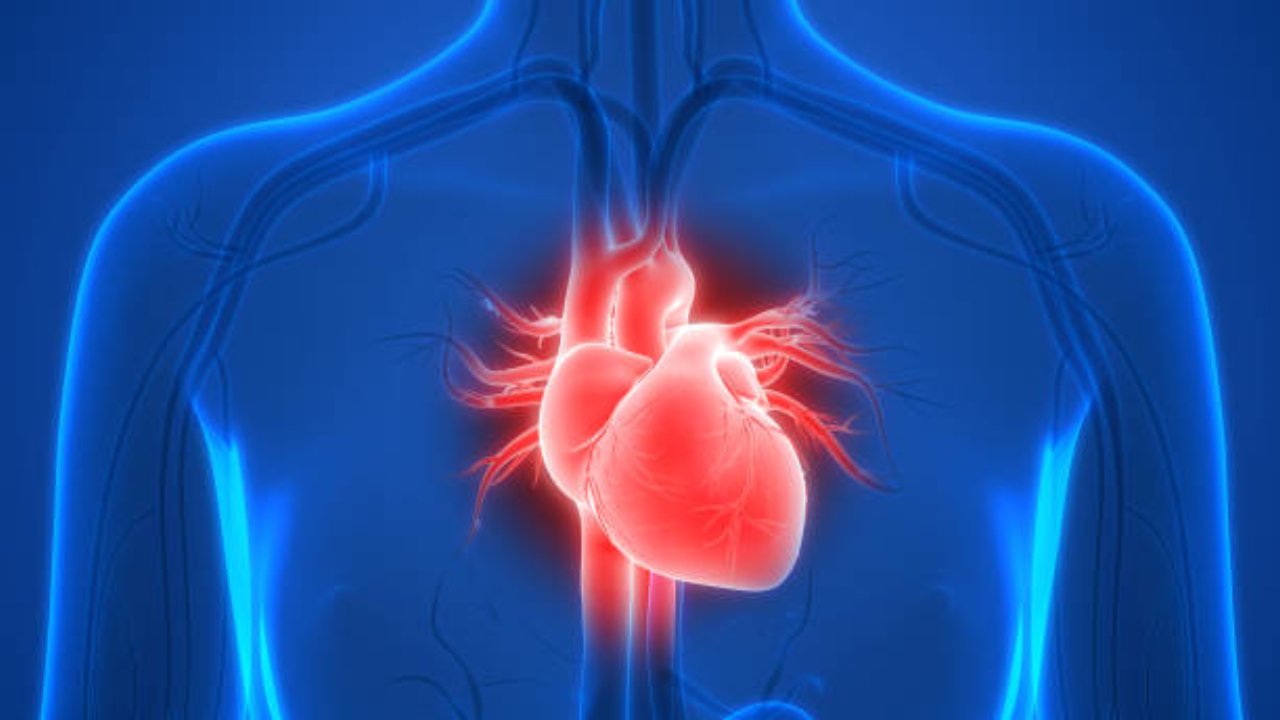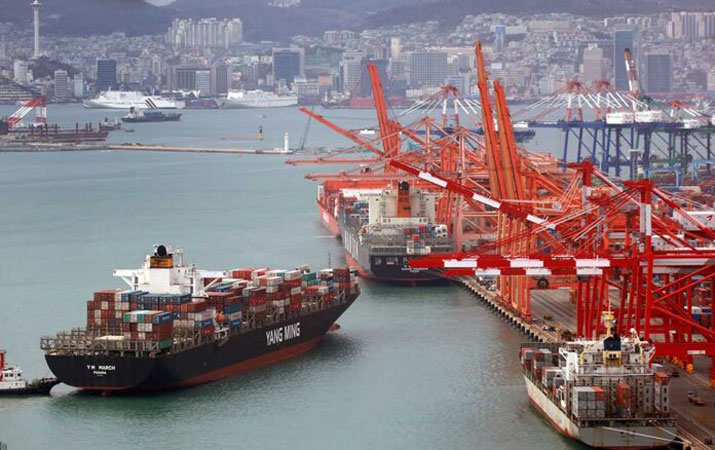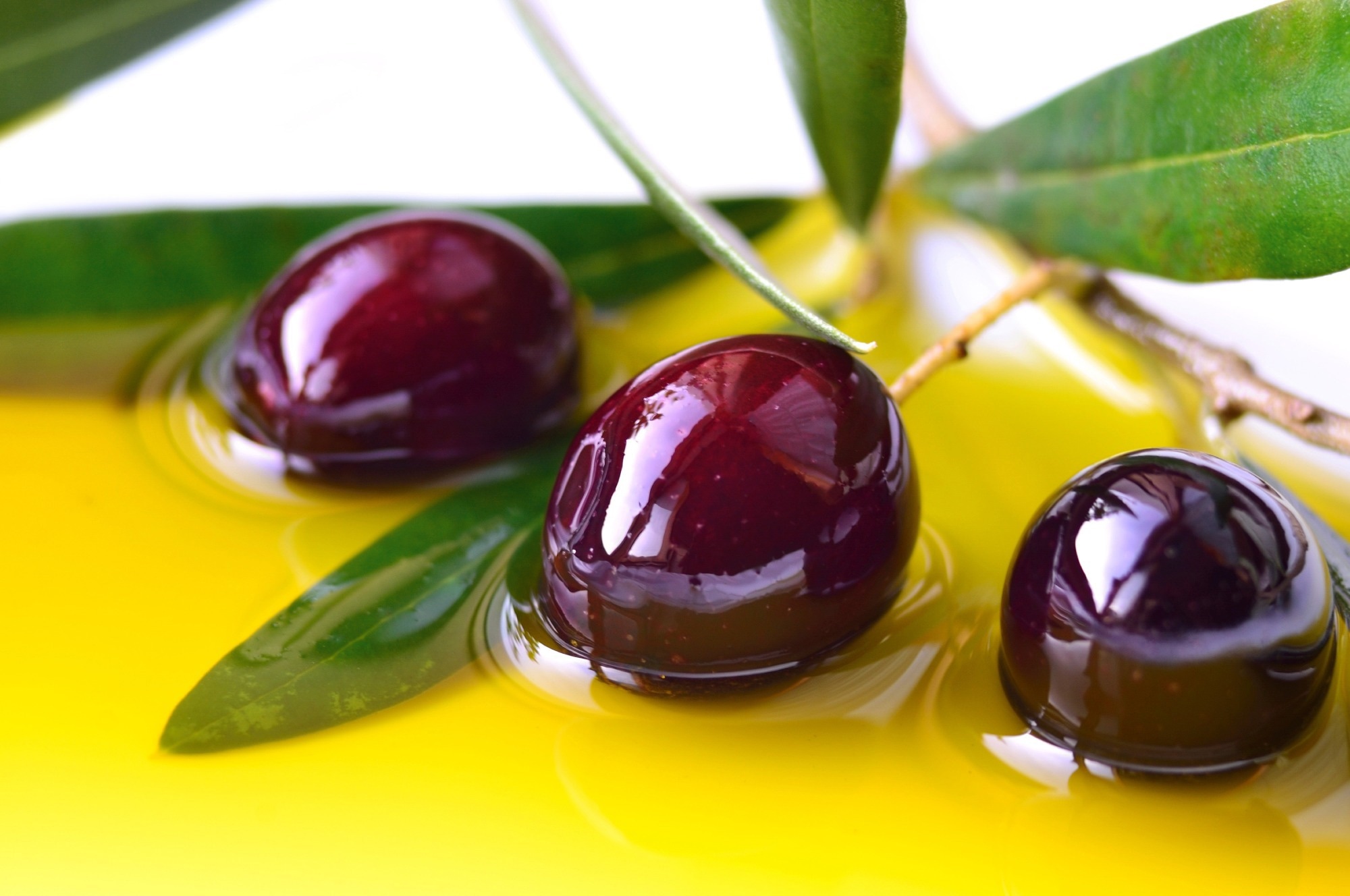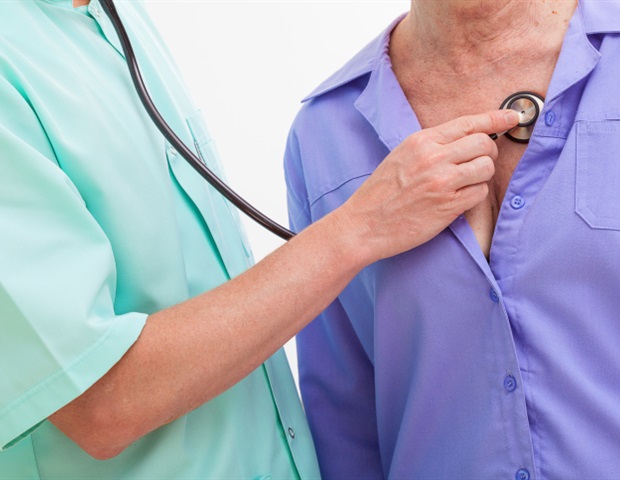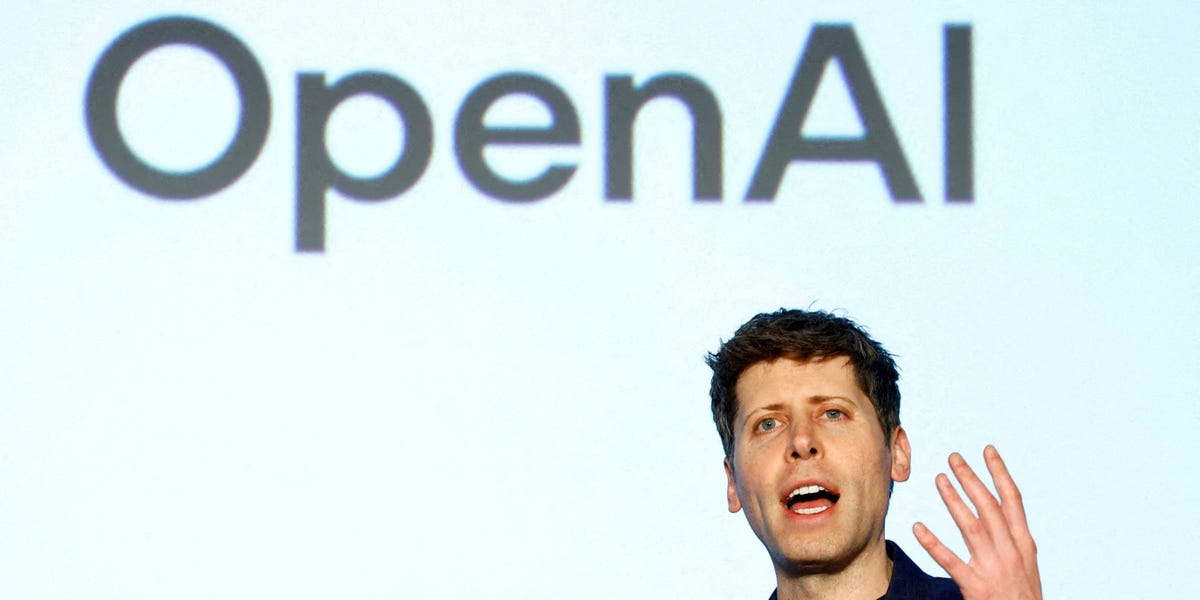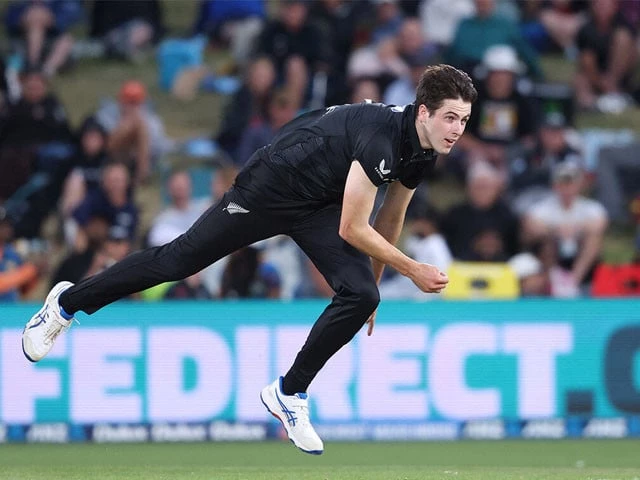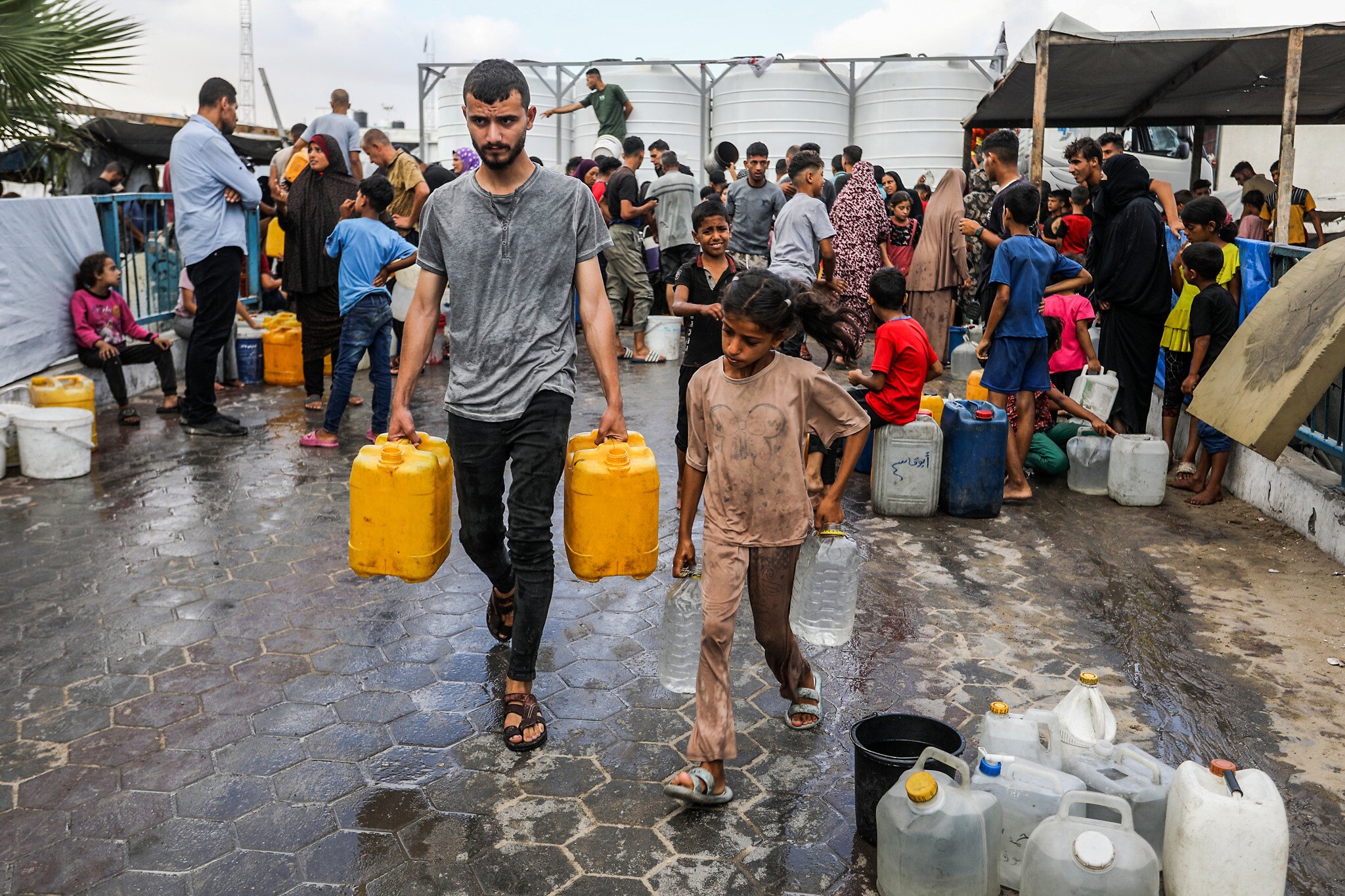Over recent months, the deteriorating humanitarian situation in the Gaza Strip has turned securing life’s most basic needs — water, food, and safety — into a daily tribulation. For many, even intense efforts will fail to provide a full stomach or a restful night.
Anas Arafat, a father of three living in Gaza City, described wartime life to The Times of Israel as a relentless struggle for survival from morning to night. “We focus on the basics,” he said.
Arafat lives in a building in the al-Daraj neighborhood in the northwestern part of Gaza City. Arafat has moved between several neighborhoods in the city, his hometown, during the war due to overcrowding and fears of IDF strikes. He is currently renting an apartment from a friend.
Unlike hundreds of thousands of other Gazans living in tents in displacement camps, Arafat has access to a jerry-rigged but functioning bathroom at home. He also still has his belongings, including clothing and kitchenware, from before the war.
With a nest egg that allows him to buy food, water, and power to charge his phone, Arafat is in many ways better situated than many others in Gaza who, lacking his means, have been left destitute, practically homeless and at the mercy of infrequent aid handouts requiring long journeys and deadly risks.
Yet even his relatively tolerable existence is still one of near-constant hardship. For Arafat and others like him who spoke to The Times of Israel to describe daily life in the Strip, making it through each day is a Sisyphean struggle filled with hunger, darkness and grave uncertainty.
“Yesterday morning, I went looking for someone selling water for washing and bathing,” Arafat told The Times of Israel via telephone. “I started around 7 a.m., and only found someone around 9 a.m.. After that, I looked for drinking water — two or three jugs. We need water for washing and for laundry every day. Even the water we buy for drinking isn’t really safe, but it’s all there is.”
While Arafat’s neighborhood has been targeted by the IDF multiple times during the war, the building he currently lives in remains habitable.
According to satellite imagery and UN statements, large parts of Gaza have been completely destroyed, including the northern tip of the Gaza Strip, eastern Gaza City, much of Rafah, and large sections of Khan Younis in the south of the Strip. In January, the UN Office for the Coordination of Humanitarian Affairs announced that 92 percent of buildings in Gaza had been damaged or destroyed.
This aerial view shows a war-devastated neighborhood in the Jabalia refugee camp in the northern Gaza Strip on April 2, 2025. (Bashar Taleb/AFP)
However, in western Gaza City, where the IDF’s ground operations were conducted primarily in the early months of the war, there are still areas with habitable buildings. The same is true for Deir al-Balah in the center of the Strip, where the IDF has conducted few ground operations.
Life in Gaza before the war was not exactly easy either. Since 2007, when the Hamas terror group seized power in a violent coup, Israeli restrictions on the movement of people and goods in and out of the Strip, as well as Hamas’s own policies, made the enclave into something of an economic basket case, with sky-high unemployment and a heavy reliance on foreign aid.
‘Every day, each member of the family gets one pita to last 24 hours. If we bathe once a week, that’s a success’
Israel said its embargo on Gaza was necessary to keep Hamas from building up its armed wing. Despite its efforts, Hamas still managed to develop a formidable fighting force along with miles of tunnels to support its activities beneath the Strip.
War erupted on October 7, 2023, as Hamas unleashed that force on southern Israel in a surprise attack, killing some 1,200 people and kidnapping 251, mostly civilians. Gazan terrorists still hold 50 hostages. Israel has said it will end the war and allow aid to flood the Strip the moment Hamas releases the hostages and disarms, blaming the terror group for the woes that have befallen Gaza’s people.
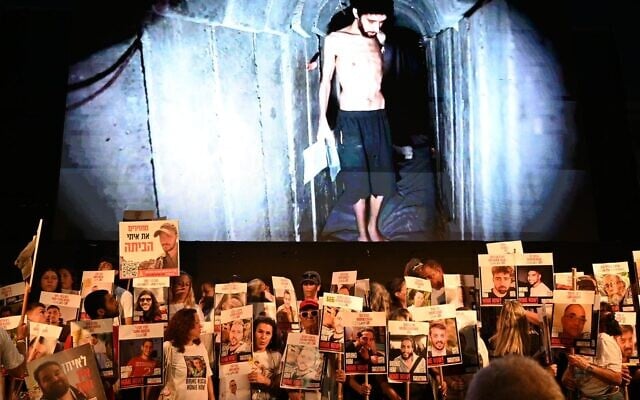
Protesters hold posters of the hostages in front of a still image taken from a Hamas video of hostage Evyatar David, on August 2, 2025. (Paulina Patimer/ Hostages and Missing Families Forum)
While lower-income segments of society before the war were dependent on humanitarian assistance, and electricity and other essential needs were often in short supply, it was possible in the past to make a living in Gaza.
Arafat, a former lawyer who was part of the Strip’s sizable self-supporting professional class, described going out to restaurants, visiting friends and experiencing a thriving social scene in his former neighborhood. Others talked about going to cafes or the beach from time to time.
One thing that remains in Gaza is cellular reception, allowing The Times of Israel to speak with residents to understand what daily life consists of. The reception relies on local infrastructure operated by Palestinian telecom companies, some of which was damaged during the war and partially repaired by Palestinians in coordination with Israel. It is also supported by cell towers located inside Israeli territory near the Gaza border.
All other trappings of modern life, like consistent access to food and water, are gone, Gazans say.
“Every day, each member of the family gets one pita to last 24 hours,” said Mouin Hilu, a Gaza City father of 10 and grandfather of two. “If not, they go to sleep hungry. For the past three or four months, we haven’t been eating properly. Every night, we go to bed hungry – waiting for morning, hoping maybe tomorrow there will be something.”
Thirst
Water scarcity in Gaza predated the war, but the crisis has worsened since the conflict began.
Before the war, Gazans used water purchased by the Palestinian Authority from Israel’s Mekorot company, as well as from local wells and desalination facilities within the Strip.
Many wells across Gaza have been damaged in Israeli strikes. In addition, in November 2023, shortly after the October 7 Hamas-led invasion, Israel announced that it would stop selling water to Gaza.
Though the supply was gradually restored in the months that followed, damage to infrastructure remains extensive. Gaza’s desalination plant also went offline after Israel severed its supply of electricity to the Strip in March 2025. On July 26, Israel said it would reconnect power to the facility, but so far, this has not been confirmed by the UN or by local sources in the Gaza Strip.
As a result, houses in Gaza don’t have access to functioning pipelines, leaving them with no running water for bathrooms, showers, cooking and drinking needs.
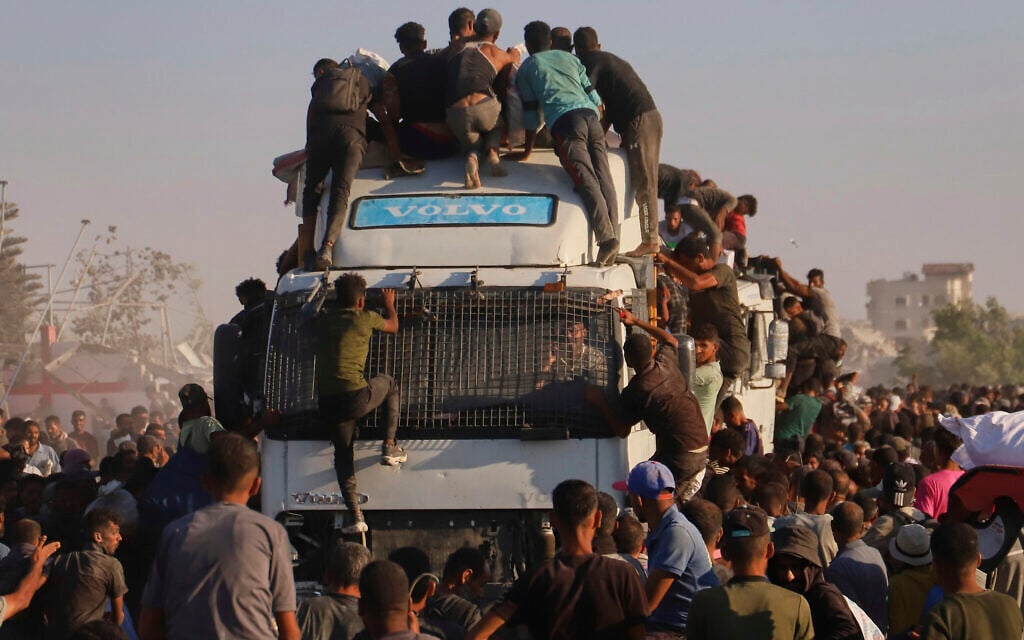
Palestinians ride on a truck loaded with food and humanitarian aid as it moves along the Morag corridor near Rafah, in the southern Gaza Strip, August 4, 2025. (AP/ Mariam Dagga)
To operate his toilet and shower, Arafat said he buys water from a private vendor who fills a cistern approximately every four days at the cost of NIS 100 ($30) per fill-up — an astronomical sum beyond the reach of many in the enclave.
The high cost means showers are an infrequent luxury, and always cold, due to the lack of electricity or functioning solar water heaters.
“If we bathe once a week, that’s a success,” said Arafat. “Hygiene has deteriorated; soap and shampoo are expensive.”
‘You can’t imagine the sight — men, women, and children running after water trucks’
For drinking water, “there are maybe three or four vehicles for the whole area that distribute water for free,” Arafat said, referring to trucks likely operated by humanitarian organizations.
But access is limited and supply outstrips demand, “so we have to buy it.”
Private suppliers provide drinking water at a cost of approximately NIS 8-10 per day ($2.36-$3) for an amount sufficient for Arafat’s family of five, which is relatively small by Gaza standards. The source from which those companies obtain the water is unknown to him.
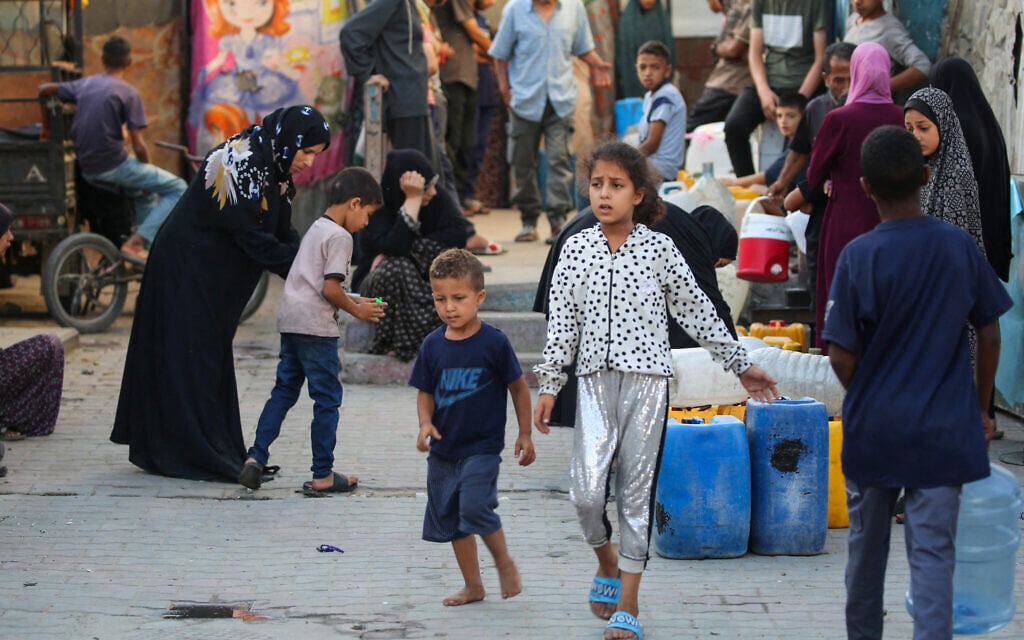
Palestinians line up near their containers as they await a water distribution truck at Bureij refugee camp in the central Gaza Strip on July 17, 2025. (Eyad BABA / AFP)
Hilu told The Times of Israel over the phone that “every morning, the first thing I do is search for water for drinking and for bathing.”
“As we speak, my children are downstairs with the water jugs, waiting by the trucks [that sell water]. You can’t imagine the sight — men, women, and children running after water trucks,” he said.
What little water his family can obtain is used for drinking or cooking, but there’s not enough for daily showers, Hilu said.
Hunger
“After the water, we look for someone selling firewood so we can cook,” said Arafat. “There’s no gas, no fuel — nothing. Every day, we hunt for firewood so our children can eat. Some people burn plastic because firewood is too expensive.”
Both Arafat and Hilu cook in their homes using utensils they had before the war, but because there is no gas, cooking is done with firewood over an open flame in the kitchen.
Obtaining something to cook is another matter entirely.
“Flour is another essential,” Hilu said. “It’s incredibly expensive.”
Hilu and Arafat, who both spoke to The Times of Israel on July 27, said they buy food from local markets in Gaza City that are still operating. Markets in Gaza operate in areas where people still live in buildings, such as western Gaza City, the Nuseirat camp and Deir al-Balah, though not near displacement camps.
But prices can be extremely high and wildly volatile, often depending on when the aid trucks most recently reached the area.
Hilu said flour was costing him NIS 40-50 per kilogram (approximately $5.45 to $6.80 per pound), down from 10 days earlier, when those who could buy the staple for NIS 150-200 per kilogram ($20-$27 per pound).
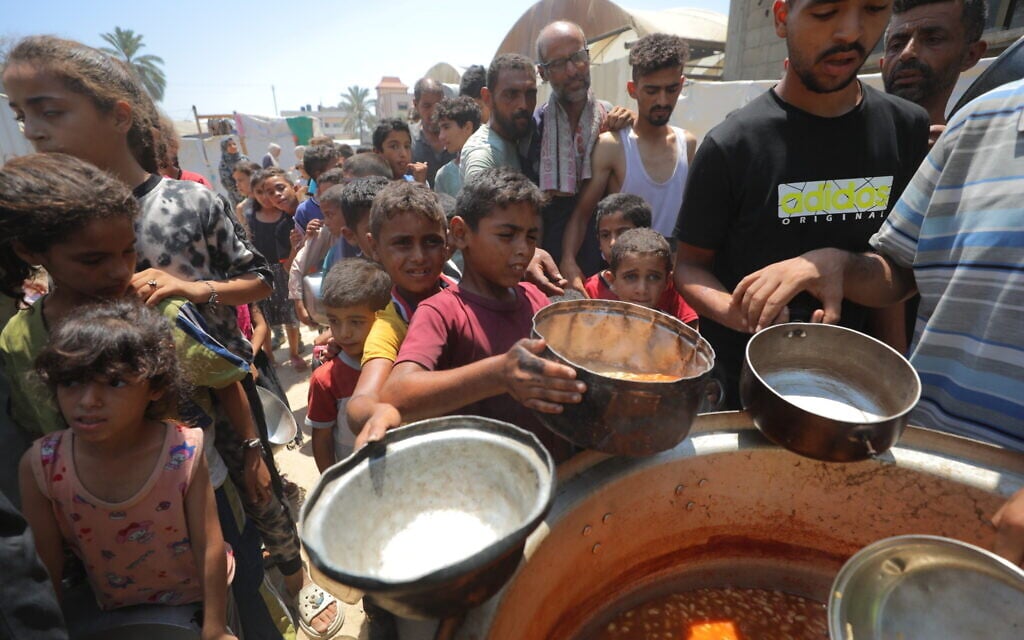
Palestinians receive meals from volunteers in Gaza City, on July 28, 2025. (Ali Hassan/Flash90)
“I listened to the news all night, hearing that aid trucks would arrive today or tomorrow. I thought I could buy flour at five shekels per kilogram, but it’s still 40,” he lamented. “Nothing has changed.”
The grandfather said his family buys enough food for a single day. Hours before he spoke to The Times of Israel, he bought a kilogram of lentils for NIS 70 ($20 for 2.2 pounds) and a kilogram and a half of flour for NIS 60 ($18 for 3.3 pounds).
“That’s our food for today. Tomorrow? I don’t know what will happen,” he said.
Arafat said he stocked up months earlier when prices were lower, allowing his family steady access to a limited diet.
“We have lentils and pasta — we eat lentils one day, pasta the next. I bought five or six kilos [11 or 13 pounds] of lentils back when more aid was entering and prices were lower,” he said.
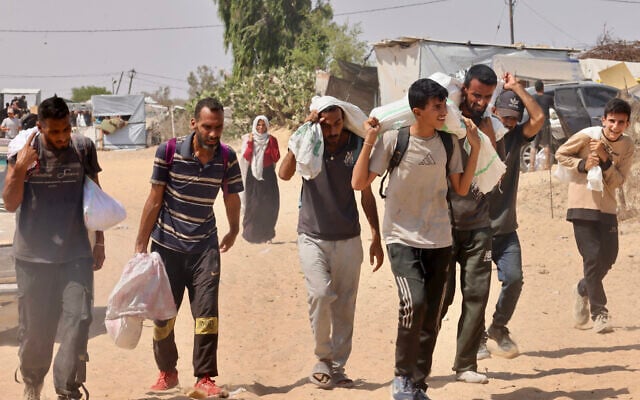
Palestinians carry humanitarian aid they received at the Rafah corridor as they walk in the Mawasi area of Rafah in the southern Gaza Strip on July 30, 2025. (AFP)
Except for a few months in the summer of 2024, Israel has blocked the private import of goods during the war, meaning food and other essentials are technically only supposed to be attainable gratis from international humanitarian organizations. Only in the last few days did Israel announce it would again allow commercial goods into the Strip.
But obtaining aid can be incredibly difficult, with international organizations having only limited supplies and near-daily reports of deadly incidents outside facilities run by the Israel- and US-backed Gaza Humanitarian Foundation, which now receives most of the supplies.
Gazans with means, therefore, usually prefer to buy food at markets that are still operating, though much of the goods they sell is thought to come from looted aid supplies.
‘That’s our food for today. Tomorrow? I don’t know what will happen’
It is unclear to what extent Hamas is involved in this theft.
Since the beginning of the war, Israel has repeatedly emphasized that Hamas is stealing the humanitarian aid sent to Gaza — particularly the aid delivered through the UN and international organizations — and reselling it to fund its terror activities.
The argument has been used to justify restrictions on the entry of food and supplies into the Strip.
However, senior military officials told The New York Times last month that no evidence had been found of Hamas systematically stealing aid from the UN, which has provided the majority of humanitarian assistance to Gaza throughout most of the war.
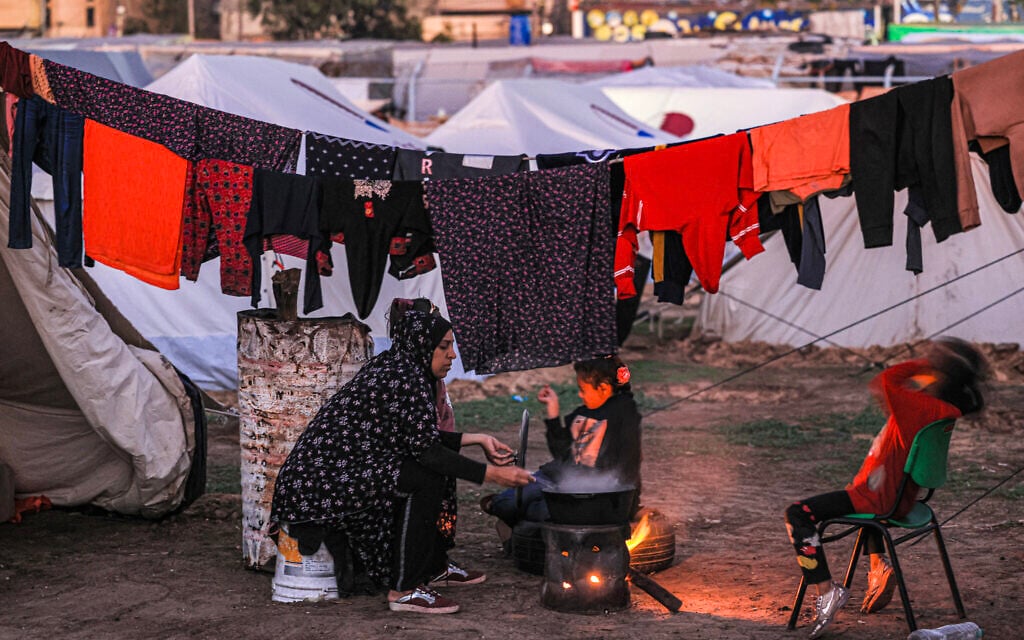
A woman sits by food cooking on a fire as children play nearby at the southern Gaza Strip on December 18, 2023. (Mahmud Hams / AFP)
Both men said food shortages in markets have worsened in recent months and prices have gone up, especially after Israel halted humanitarian aid for two months starting in March this year, and later reduced the flow through UN channels in favor of GHF.
Unlike Arafat and Hilu, many Gazans have no money to spend at markets and no supplies of stored food, leaving them completely reliant on limited aid supplies and public kitchens that provide hot meals, amid accounts of severe food shortages. According to estimations of humanitarian organizations, tens of thousands of people in Gaza fall into this category.
‘The hardest part is the children. We give them two meals a day. And even those aren’t real meals — just something to quiet their hunger’
In recent weeks, reports have proliferated of widespread starvation in the Strip, with Hamas-controlled health authorities in Gaza reporting dozens of deaths from hunger. These numbers are disputed by Israel.
On August 1, World Central Kitchen said it was managing to provide 90,000 meals a day to Gazans when supplies allowed, far below the number needed, due to Israeli military restrictions hampering the flow of aid supplies to their facilities. It was also supporting 25 community kitchens with supplies, down from over 90 kitchens it was able to help earlier in the war.
“The major drop in our ability to serve hot meals, along with reduced availability of food through other means in Gaza like local markets, has meant the need far exceeds what we can serve,” the group said.
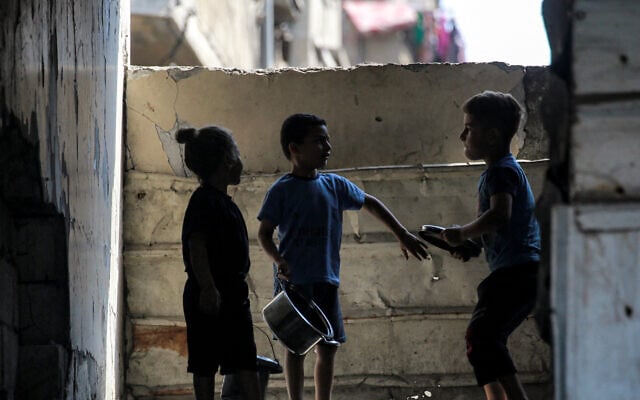
Children wait with pots to receive meals from a charity kitchen in Gaza City on July 14, 2025. (Bashar TALEB / AFP)
Arafat and Hilu both said the food they buy and cook for their families was not enough for three full meals a day.
“The hardest part is the children,” said Arafat. “We give them two meals a day, one in the mid-morning, one in the afternoon. We can’t afford three. And even those aren’t real meals — just something to quiet their hunger. We purchase 2–4 kilograms of flour daily. If it’s too expensive, we look for alternatives — maybe a bowl of hummus in the morning.”
Powerless
The two men live in houses in Gaza City and haven’t relocated into tents or other shelters, which are considered more difficult living conditions due to a lack of bathrooms, showers, proximity to food, and overcrowding.
According to the UN, over 1 million Gazans are living in temporary shelters across Gaza, some in displacement camps, others in scattered pockets of open space, including traffic circles.
But even those in homes lack electricity. Clothes are washed by hand and night is experienced by candlelight.
Electricity was already limited for Gaza residents before the war, but it is now completely unavailable.
In prior years, Israel sold electricity to the Palestinian Authority, which transferred it to the Strip, and there was a single power station in Gaza that generated electricity using fuel imported from Israel. Israel provided most of Gaza’s electricity, though the amount varied over time depending on the security situation in the Strip.
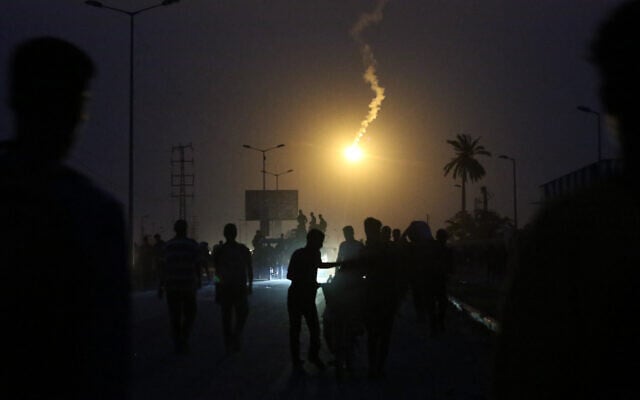
Flares light the sky as Palestinians gather to meet trucks carrying humanitarian aid at a distribution point at the Bureij refugee camp in the central Gaza Strip, early on June 9, 2025. (Eyad BABA / AFP)
On October 9, 2023, Israel cut off its electricity supply to Gaza. Gaza’s power station has also ceased to operate due to bombings and the halt of diesel deliveries.
As a result, no electricity flows to private homes or institutions in the Gaza Strip, and there is no ability to generate it independently.
Hospitals and other humanitarian organizations rely on diesel-powered generators, but these are generally not available to private households.
Some Gazans have access to power through solar panels. Before the war, rooftop panels were widespread due to Gaza’s chronic power shortages, but it’s difficult to determine how many survived the destruction wrought by the war.
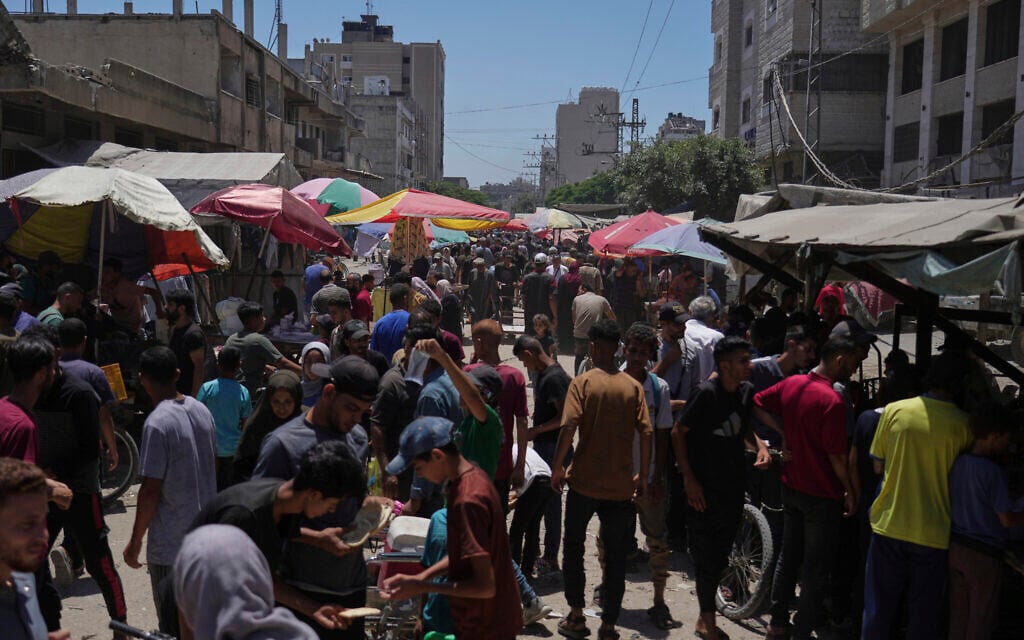
People walk through the Al-Sahaba Market in the center of Gaza City, July 9, 2025. (AP Photo/Jehad Alshrafi)
In other areas of daily life, a black market has emerged, including one for charging cellphones and other devices for those who can afford to pay for it.
“Some people who have solar panels offer to charge your phone for one shekel a day. If you do that for a month, that’s 30 shekels,” said Arafat.
Footage on social media shows that some businesses are now offering electricity. For example, a cafe in Khan Younis posted a list last week of prices for charging devices, charging NIS 4 ($1.16) per megawatt for two hours of use.
Empty wallets
The job market in Gaza has been nonfunctional for nearly two years. Since the war began, most private businesses within the Strip have shut down, though videos circulating on social media during the war have shown restaurants and cafés open in Gaza, including in recent months.
Arafat, who testified that there were no restaurants or cafés open in his part of Gaza City, described life on the streets as nearly frozen, especially after dark, with destitution and lawlessness widespread.
“People go out only for necessities,” he said. “By 5 p.m., the streets are empty. Anyone who ventures out at night risks being targeted by airstrikes or theft. There’s no internal security in Gaza.”
When Hamas stopped visibly operating on the ground in Gaza out of fear of being targeted by Israel with the outbreak of war, it also ceased operations of its internal security forces, such as the police.
According to reports from Gaza, armed Hamas forces still operate against the Palestinian population, but in a more limited and selective manner — for example, acting against individuals attempting to loot aid, as part of Hamas’s effort to control the humanitarian assistance entering Gaza.
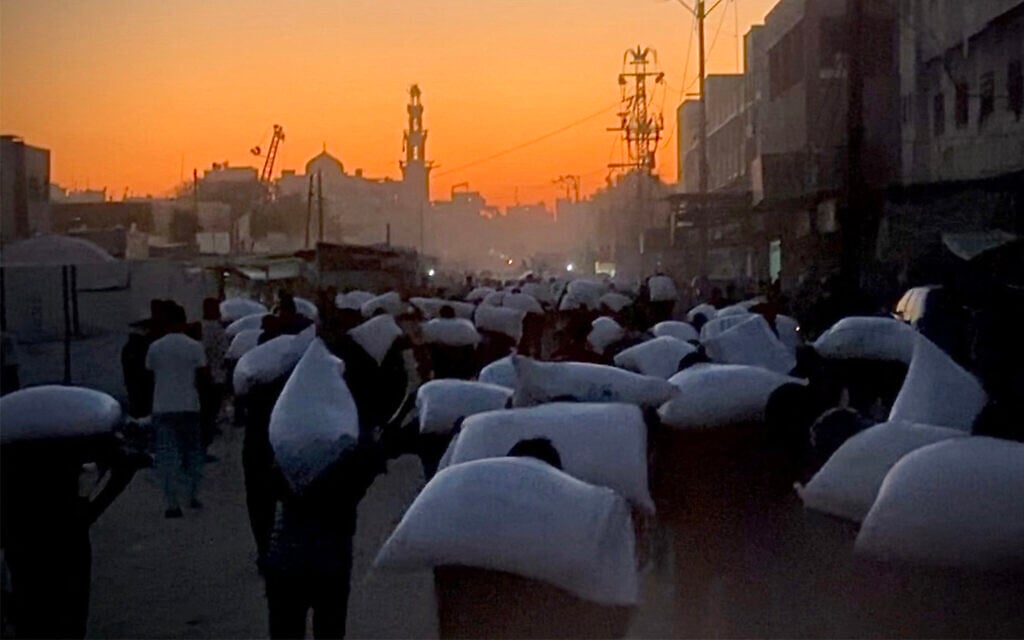
Men walk carrying sacks of flour that were taken from a raided truck carrying foodstuffs, in Khan Younis in the southern Gaza Strip on July 22, 2025. (AFP)
Arafat has been out of work since the war started, along with pretty much every other Gazan.
Even Hamas, which shut down government institutions at the start of the war, has stopped paying salaries to its fighters as of early 2025, according to the Wall Street Journal, due to the organization’s budgetary difficulties.
It’s unclear if the terror group, which was Gaza’s largest employer before the war, has continued paying government officials. Many in Gaza, which had rampant unemployment and poverty even before the war, are thought to be broke.
‘By 5 p.m., the streets are empty. Anyone who ventures out at night risks being targeted by airstrikes or theft’
Arafat, Hilu and others in Gaza said they were living off of savings in their bank accounts. Arafat said that during the war, he also received sporadic donations from friends outside Gaza who transferred money into his bank account.
A resident of Gaza City, who requested anonymity and whose financial situation was relatively good compared to others in the Strip, said he had saved a significant amount of money before the war and is now “set,” as he put it.
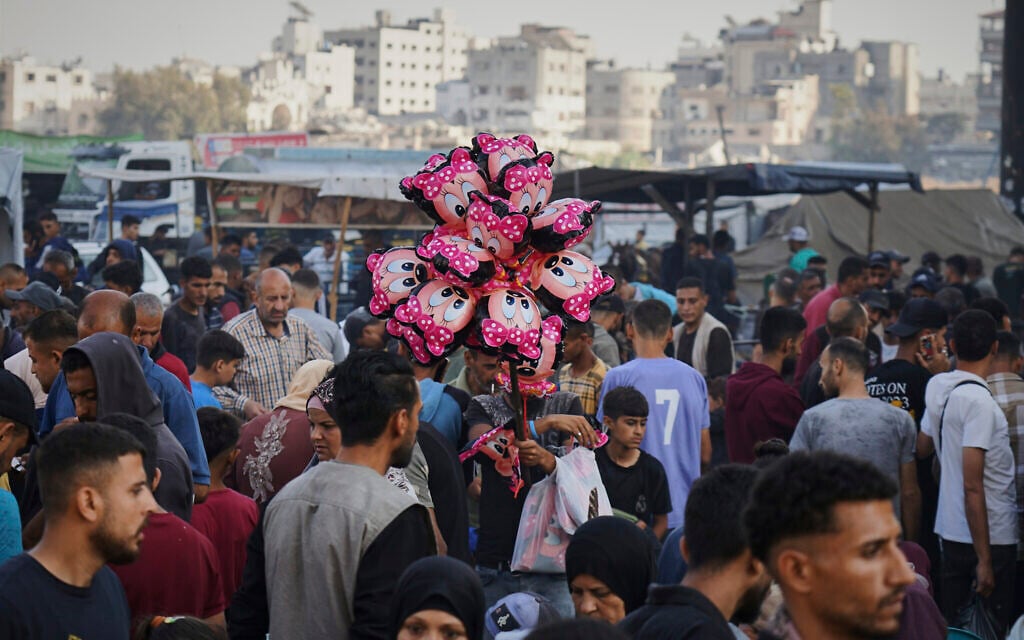
Palestinians walk through a market ahead of the Muslim holiday of Eid al-Adha, in Gaza City, June 5, 2025. (AP Photo/Jehad Alshrafi)
Hilu is a former employee of the Palestinian Authority, which employed tens of thousands of civil servants who were dismissed following Hamas’s violent takeover of the Strip in 2007. To maintain symbolic control over the territory, the Palestinian Authority continued to pay their salaries, which were deposited monthly into bank accounts in Gaza prior to the war.
Hilu said that during the war, he continued receiving his salary, though delayed and partial, similar to PA employees still working in the West Bank. However, over the past two months, he has not received any salary at all, due to the PA’s budgetary difficulties stemming from Israel’s withholding of tax revenues it collects on the PA’s behalf under the Oslo Accords.
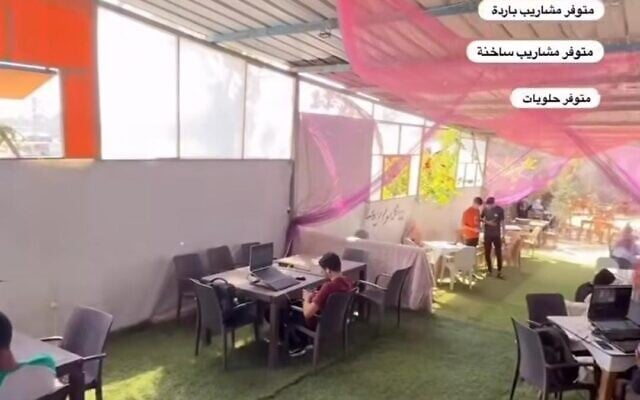
A café in Khan Younis offering device charging services due to the electricity shortage in Gaza. July 25, 2025. (Instagram, clause 27a of the copyright law)
But even those with money in the bank don’t have easy access to the funds.
Most banks have been closed since the war began and only partially reopened during the last ceasefire, though the institutions, which are all headquartered outside of the Strip, continue to give Gazans access to their accounts via phone apps.
To take out cash, many in Gaza are forced to use private currency brokers who charge high fees.
‘I have money in the bank, but it’s no use if I can’t access it’
“I have money in the bank, but it’s no use if I can’t access it,” said Hilu. “You have to pay a 50% commission to withdraw it. I have 200–300 shekels in my wallet now – not even enough for one day’s food.”
Some also take out money by finding friends or associates willing to loan out cash and get paid back via bank transfer.
“When I run out of money, I go to a friend who’s a merchant — he gives me 200 shekels, and I send it to him later through the bank’s app,” Hilu said.
Stunted
Like other institutions, schools, universities and daycares in Gaza have been shuttered since the war began with Hamas’s deadly invasion of southern Israel on October 7.
During the ceasefire, some schools partially reopened, but currently everything is closed again and the children remain at home.
Arafat said he struggles with trying to protect his children — ages 6, 5 and 19 months — while trying to keep them busy.
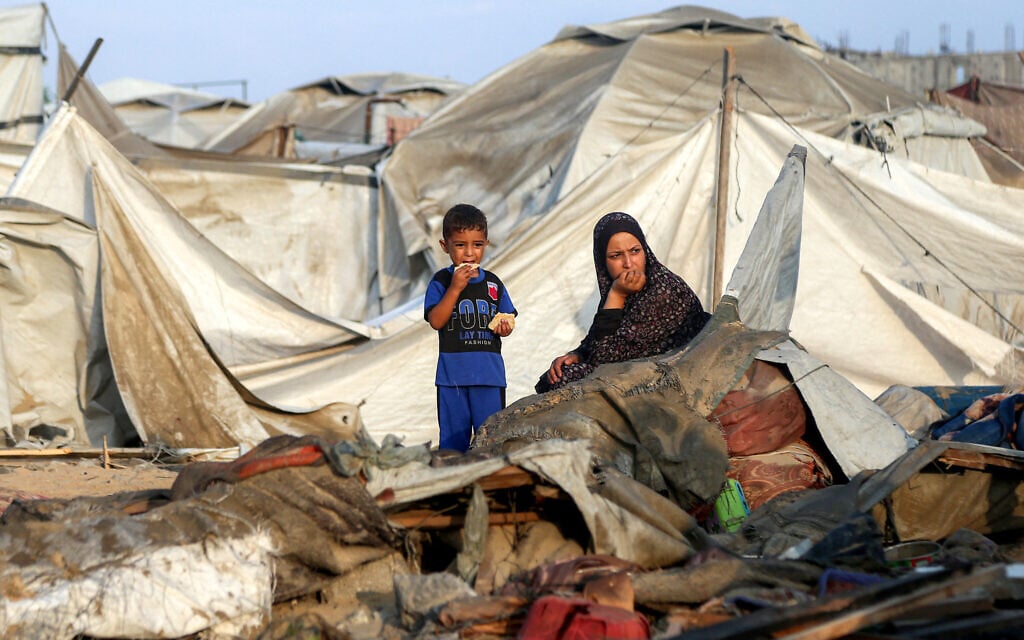
A woman and a boy sit by debris and destroyed tents following overnight Israeli bombardment at a camp sheltering in the northwest of Khan Younis in the southern Gaza Strip on July 28, 2025. (AFP)
“We don’t want them playing too much — they’ll get hungry. We feed them, then tell them to sleep or rest,” he said. “It’s dangerous outside because of bombings. I don’t let them leave the building. I set up a little learning space for kids in our building during the war. They sit on chairs, play a little, but I don’t let them expend a lot of energy.”
Despite everything, the families remain hopeful as they hear news of potential increases in aid.
“My kids say to me: ‘We want meat, it’s been so long.’ My daughter told me, ‘You said to grow strong, we need to eat — but we eat nothing but lentils and pasta. I want a banana.’ That hurts more than the bombings,” Arafat said. “But even if aid comes in, people have no money to buy it. Still, there’s hope. As long as there are Palestinians, and as long as Allah exists, there is hope.”


